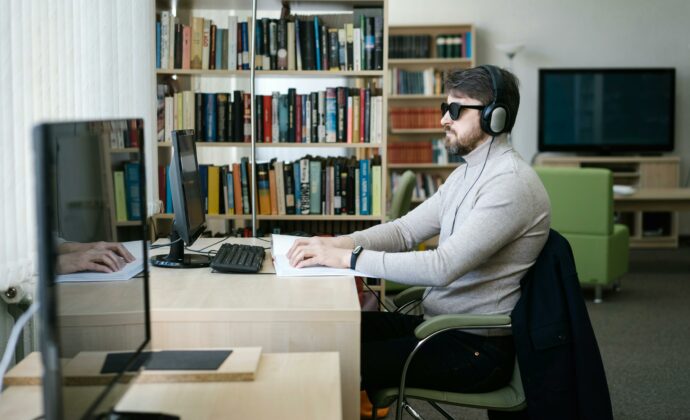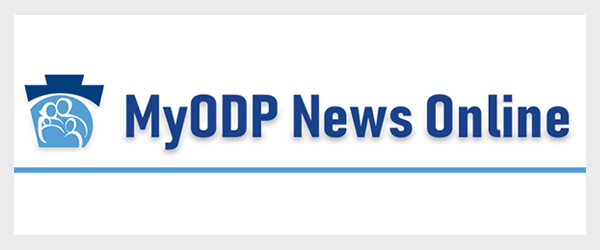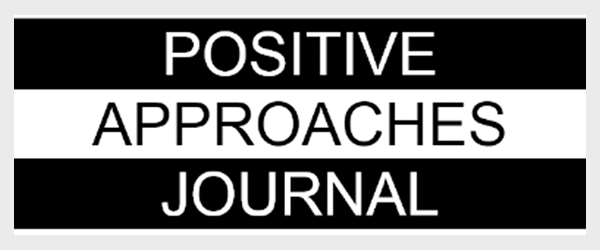
Assistive Technology Solutions Enhance Supports for People with Disabilities
By Allis Kensing
Enabling Technology Manager
Penn-Mar Human Services
My first experience with Assistive Technology (AT) solutions was in 2016 while working for a provider to find employment opportunities for people with intellectual and developmental disabilities. I was intrigued with its potential and the limitless possibilities beyond that function.
By definition, Assistive Technology is any item, piece of equipment, software program, or product system that is used to increase, maintain, or improve the functional capabilities of persons with disabilities.
When strategically adapted, it promotes autonomy, self-direction and community engagement and can help address direct care workforce shortages with different types of remote supports.
We are all familiar with the more common technology tools such as computers, tablets and cell phones. But there are many other items – both high and low tech – that can also be considered AT tools. They can be:
- Simple low-tech items like Post-it notes, highlighters, and picture boards.
- Adaptive tools for dressing, cutting, meal prep and dining.
- Remote devices that make it easy to turn on the TV and seamlessly flip through the channels
- Magnifiers in different shapes and sizes with options to increase magnification, turn on a light, or take a picture to enlarge type and make it easier to read.
- Wheelchairs, canes, and walkers to improve mobility and provide safety.
- Sock aids designed to assist with putting on socks more easily.
- Talking alarm clocks that start the day on time
- Medication dispensers hooked up to an APP to remind people what time to take their meds.
- Headphones that deliver white noise and meditative music to help people focus on the moment and block out an overstimulated sensory environment.
- Siri and Alexa voice assists, Google Home and virtual date planners.
I think you get the point: We’ve come a long way from the days of using picture boards to help people with disabilities create independent lives!
The Turning Point
Certainly, the pandemic created the perfect storm for providers to start thinking creatively about how they could connect with the people they support while they were homebound and unable to participate in Day Programs and community outings. FaceTime, Zoom, and Google Meet helped to bridge the gap, but the times demanded even more creative thinking from families, team members and the people supported themselves.
Organizations began to explore the vast potential of AT to better provide education, stimulation, connection and independence to counteract the imposed isolation as well as the shortage of Direct Support Professionals (DSPs). Subsequent studies and discussions in our field verify that this was the explosive moment for AT solutions.
Educate Yourself and Your Team
No doubt many of you are, and have been, using a variety of the AT items listed above. But how do you take the next step to ensure that your organization, your family member, or you yourself are equipped to employ a technological approach that meets your or someone else’s needs? How can you be best prepared to offer person-centered and customized AT solutions that align with people’s goals and personal outcomes?
You can begin by educating yourself or your team, starting with an overview of what AT solutions look like and the many different options and State resources that are available to support AT. This information can then be shared with your loved one, colleague, or fellow self-advocate. I’m certain you will find that the possibilities are endless.
Everybody can contribute to this type of creative thinking and within organizations, these ideas can be enhanced with e-learning solutions to help people infuse AT into the company’s culture and person-centered mission. With education about the advantages of AT, people will be more open to taking risks with their applications.
Start with a Mini-Assessment of Needs
To begin exploring what AT solutions are right for your family or the person you support, start the conversation by asking a series of questions:
What tasks are difficult for you?
- Will the use of AT help you complete these tasks more independently?
- Will you be able to use the AT in different places (work, home, social situations)?
What have you tried before?
- What ways of doing things have you tried?
- What materials, equipment, or tools have you used in the past?
How involved will you be in the process?
- Will you be part of the decision making to figure out what AT you should try?
- What do you hope the AT device will do for you?
- Will you have a chance to try it before buying it?
How will you know if the AT device is a good fit for you?
- Will you be trained on the new AT device?
- Will you actually use it?
- Will the AT device help you meet your goals?
Every state has an AT Program you can access and you’ll find it to be one of your greatest resources. In addition to the services of knowledgeable staff, the states also house extensive AT Library collections that include high- and low-tech devices as well as medical durable equipment such as walkers, motorized wheelchairs and ramps that can be modified for your home. Operating just like a regular Library, you can take all of the above out on loan and try it out before committing to a purchase. The state can also help you with financing sources if that is necessary. When it comes to AT Solutions, one size definitely does not fit all! So start with the self-assessment and share your discovery with your state’s AT department to begin finding the solutions you need to “increase, maintain, or improve the functional capabilities of persons with disabilities.”
Allis Kensing works with her team at Penn-Mar Human Services to find technology solutions for the people with intellectual and developmental disabilities they support to help create new opportunities for providing increased independence and connectivity with the community. She created an Assistive Technology (AT) Lending Library at the organization and collaborates regularly with team members and vendors to test and procure new technologies that align with people’s goals and personal outcomes. Prior to joining Penn-Mar in 2022, Allis was employed by The ARC Baltimore for 20 years where she first implemented AT solutions to help the people they supported find employment opportunities.


